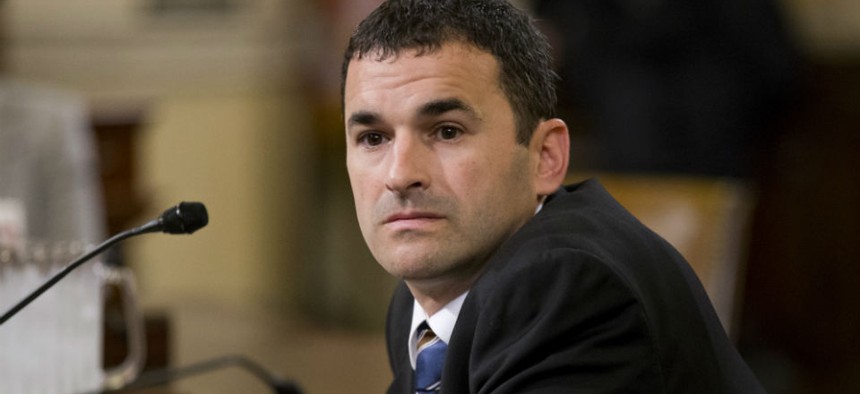
"We can't just assume the problem away," said Danny Werfel, former OMB controller and acting IRS commissioner. J. Scott Applewhite/AP file photo
Former Federal Leaders Seek Legislation to Save the SES
Group says action needed to preserve and protect the federal senior executive corps.
A group of former high-ranking federal government officials will issue a blueprint to overhaul and improve the Senior Executive Service early next year, with hopes that Congress will adopt the changes through legislation.
At a symposium hosted by the Brookings Institution Wednesday called “Building a 21st Century Senior Executive Service,” current and former federal officials spoke of the pressing need to reform the program and ensure its continued success. More than six in 10 SES employees will be eligible to retire next year, experts said, so agencies and lawmakers must act swiftly to boost retention and recruitment efforts.
“We can’t just assume the problem away,” said Danny Werfel, who has served as the Office of Management and Budget’s controller and the effective acting commissioner of the Internal Revenue Service. “We have critical potential leadership gaps, skills gaps that are emerging.”
The officials called on federal agencies to do a better job of praising their senior executive workforces to both boost morale and retention of current managers as well as to recruit the next cadre of leaders.
Federal executives are encumbered by negative rhetoric and a congressional desire to strip away civil service protections, which the former leaders said agencies must combat with constant reminders of their contribution to mission fulfillment.
“Tell them the things they are doing well,” said Bob Hale, former comptroller at the Defense Department. “It will be complicated by the fact that there are some negative messages. It is really the job of the federal leaders currently in government, but also former leaders like me, to tell their story.”
Sean O’Keefe, who has led NASA, the Navy and OMB, said the SES is made up of individuals with “extraordinary talent” that rarely get any public attention. Most important to O’Keefe, however, was the need to improve workforce development and succession planning. At the end of each presidential administration or the beginning of a new one, he warned, there is bound to be a lot of turnover in the SES corps.
“We spend a lot of time on the military side training and developing leaders,” O’Keefe said, while government does not “spend nearly as much time on a coherent, planned effort on the civilian side.”
The group, in conjunction with Brookings and Booz Allen Hamilton, is still finalizing its legislative proposal. Despite the sometimes muted enthusiasm for civil service reform on Capitol Hill, the advocates saw signs for hope.
“There is a management agenda that exists,” Werfel said, pointing to performance, improper payments and transparency reforms.
“We have a responsibility to ensure human capital is placed in that discussion,” he added.
NEXT STORY: Zen and the Art of Cubicle Living







